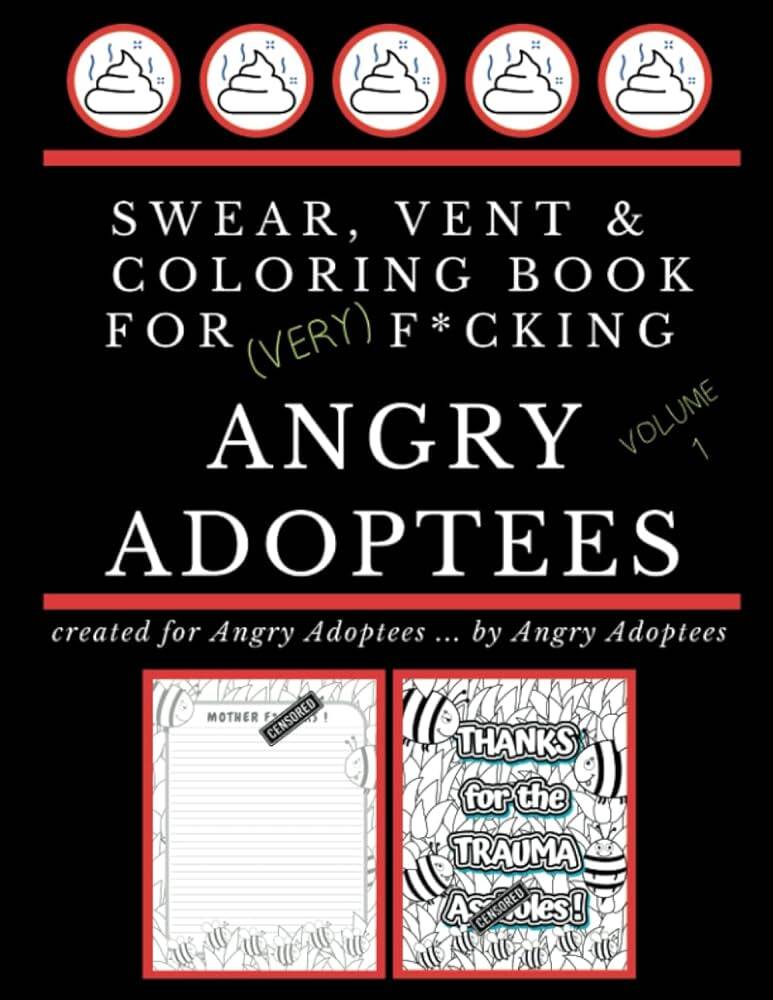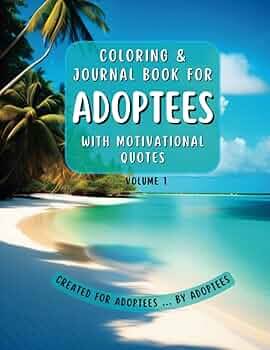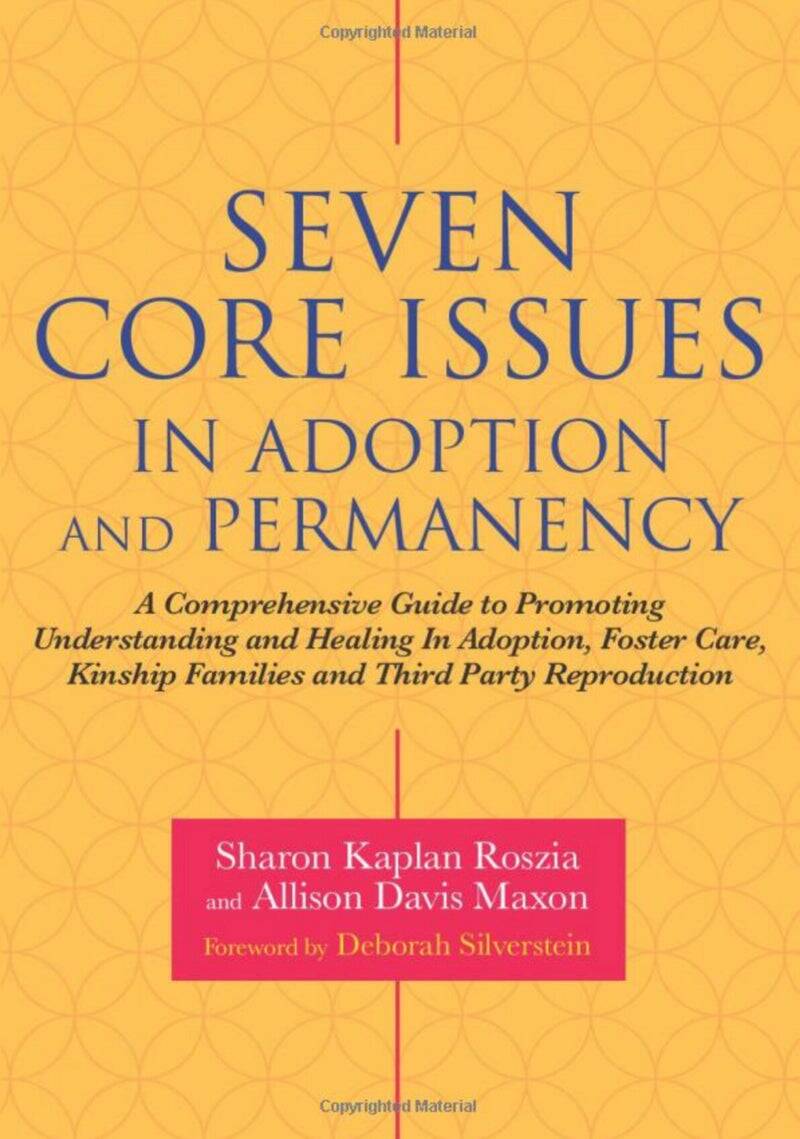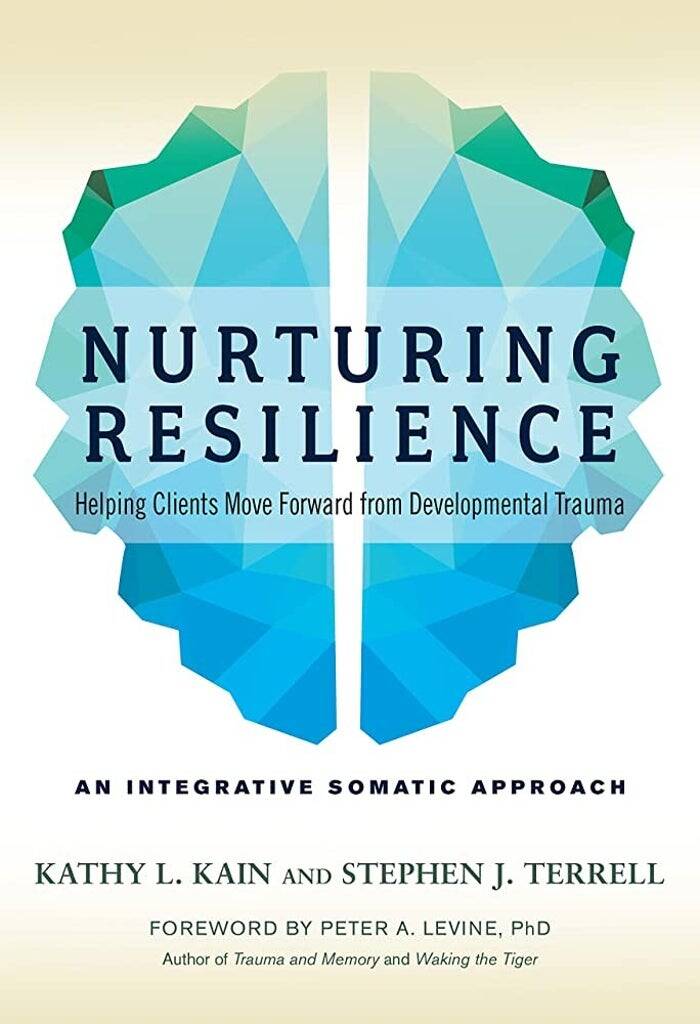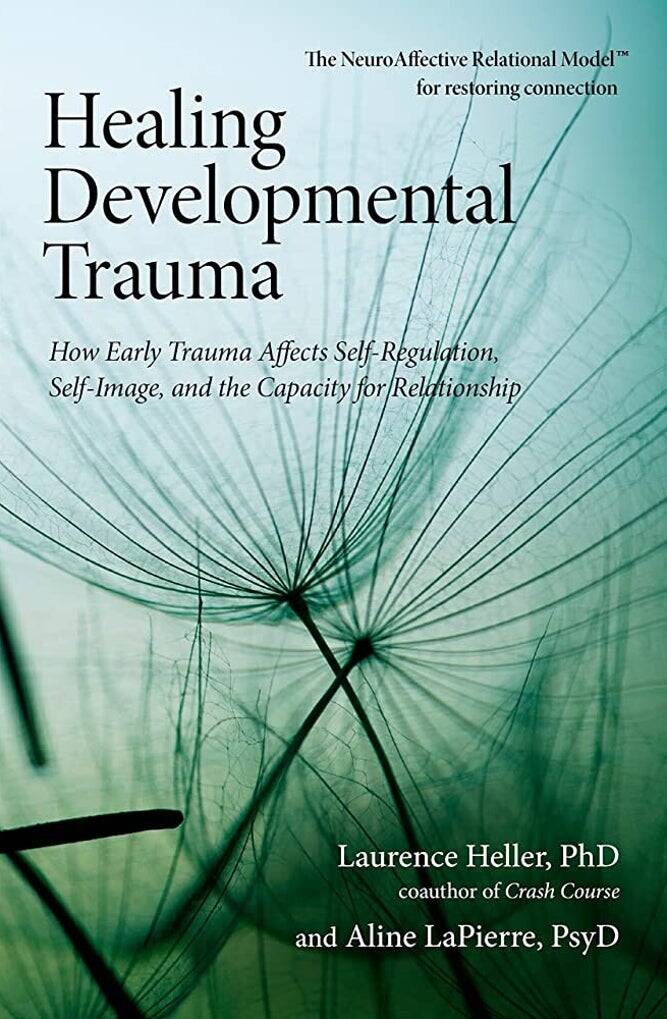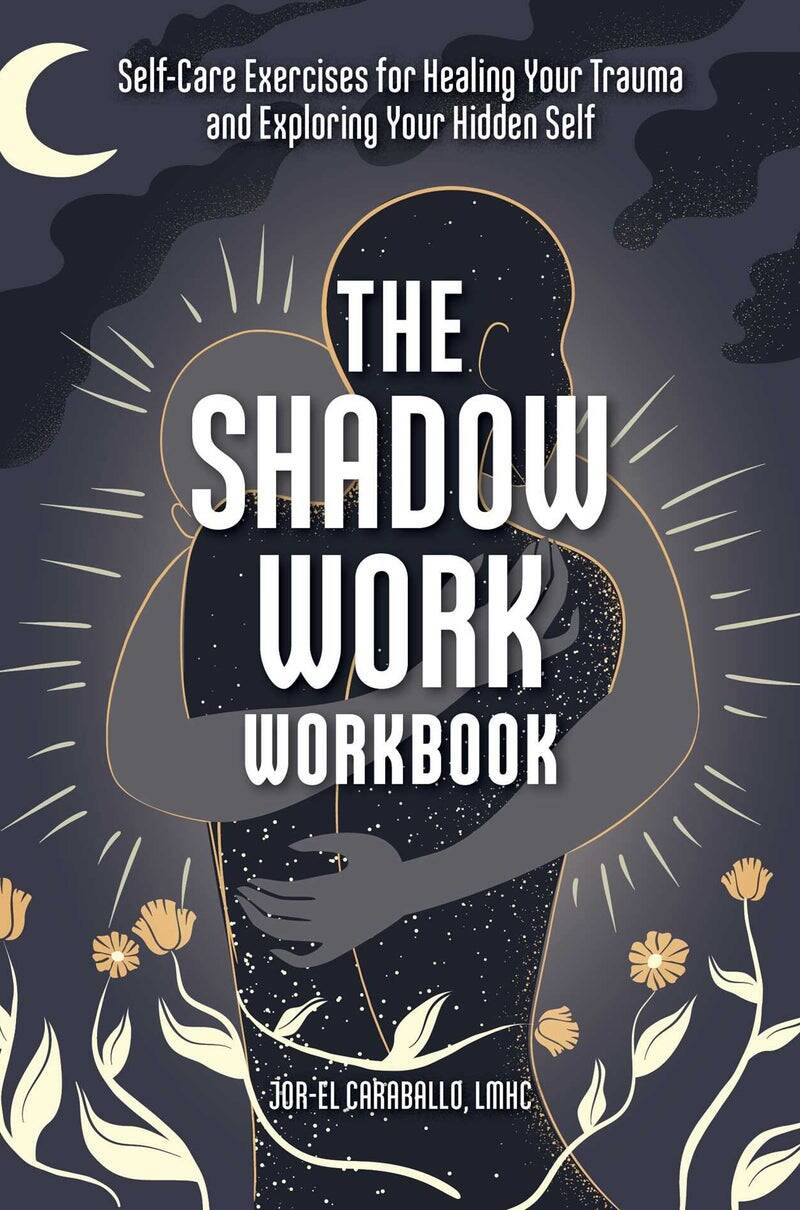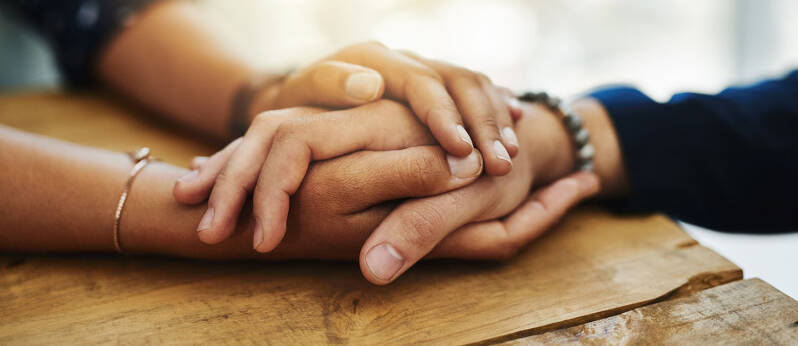
Adoptee Therapists Directory
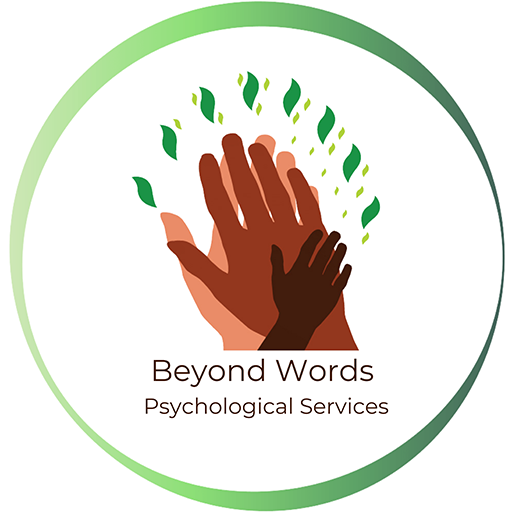
Beyond Words
Grow beyond words is a directory of licensed clinical therapists that are adoptees themselves, and understand the complex emotional wounds we face as adoptees. It is hard to find trauma-informed therapists that don't gaslight us with their preconceived notions and biases on adoption. Adoptees need a safe space where they can feel comfortable expressing all their feelings without fear of judgment, or condemnation for it not fitting the societal norm of what adoption should look and feel like.

C.A.S.E
C.A.S.E. created the accredited Training for Adoption Competency (TAC) program to train more than 1800 mental health therapists nationwide from 18 different states. Adoptive, kinship and foster families across the country can now search by state to find mental health professionals who have the specialized skills to address your unique needs.
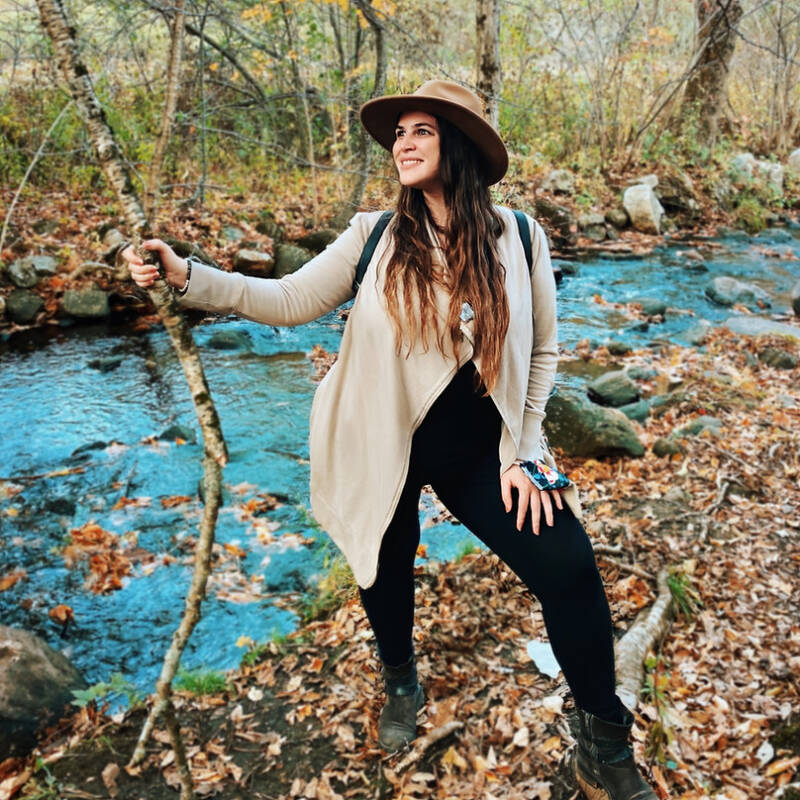
Online Coaching and Support Group for Adoptees
Alé Cardinalle, MSW, founder of Wild Heart Collective, is an international adoptee from Brazil and has years of experience as an online coach, working with emotional eaters at Out of the Cave, LLC, is a trained psychotherapist, and works with an adoptees, adoptive families, and as a consultant to those seeking to portray adoption in media. Alé is hosting adoptee group and individual coaching.

Rooted in Adoption LLC
Veronica is a domestic adult adoptee. She graduated with a bachelor of arts degree in sociology and later went on to earn a master's degree in mental health counseling from Webster University. Veronica has over ten years experience working in the mental health community, and now strives to create resources for the adoption community based on her own personal experiences.

AdopteesOn
Adoptees on is a podcast that features adoptees and their stories. They have a list of therapist who have been featured on their podcast
The FOG

What is “The FOG?”
The FOG is an acronym that stands for Fear, Obligation, and Guilt.
More Coming Soon
7 Core Issues with Adoption for the Adoptee
The parent and child in an adoptive family have an unshared genetic and social history that all must take into account.
The most helpful therapists and experts are those who understand the seven core issues of adoption and know that they resurface often in the lives of any member of the adoption triad. The following information has been adapted from the work of Deborah N. Silverstein and Sharon Kaplan. Although their work specifically relates to adoption, much of the information can also be applied to foster children.
- Loss. Adopted children morn the loss of their birth parents, even when they are happy with their adoptive family. Their loss can feel more prominent at various developmental stages, but especially as a teenager or young adult.
- Rejection. Adopted children often feel rejected by their birth parents and subsequently avoid situations where they might be rejected or provoke others to reject them to validate their negative self-perceptions.
- Guilt/Shame. Adopted children often believe there is something intrinsically wrong with them and that they deserved to lose their birth parents, which causes them to feel guilt and shame.
- Grief. There is no ritual to grieve the loss of a birth parent. Suppressed or delayed grief can cause depression, substance abuse, or aggressive behaviors.
- Identity. Adopted children often feel incomplete and at a loss regarding their identity because of gaps in their genetic and family history.
- Intimacy. Many adopted children, especially those with multiple placements or histories of abuse, have difficulty attaching to members of their new family. Early life experiences may affect an adopted child’s ability to form an intimate relationship.
- Mastery and Control. Adopted children sometimes engage in power struggles with their adoptive parents or other authority figures in an attempt to master the loss of control they experienced in adoption.
Sources:
https://nacac.org/resource/seven-core-issues-in-adoption-and-permanency/
https://affcny.org/7-core-issues-of-adoption/
Our Bodies and Trauma
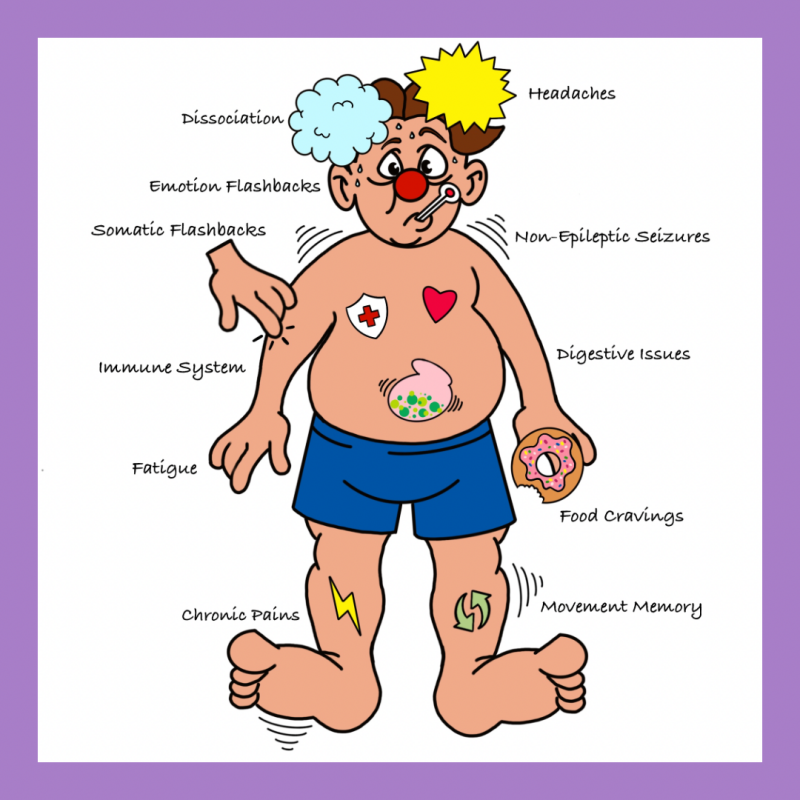
Trauma can be stored in the body in a variety of ways. When a person experiences a traumatic event, their body’s natural response is to activate the “fight or flight” response, which triggers the release of stress hormones such as adrenaline and cortisol. These hormones prepare the body to respond to a threat by increasing heart rate, blood pressure, and respiration, and by tensing the muscles.
If the trauma is not resolved and the stress response is prolonged, the body can become stuck in a state of high alert. This can lead to chronic physical symptoms, such as muscle tension, headaches, digestive issues, and chronic pain. Additionally, the nervous system can become dysregulated, with the sympathetic nervous system (responsible for the “fight or flight” response) being overactive and the parasympathetic nervous system (responsible for relaxation and rest) being underactive. This can lead to difficulty sleeping, irritability, anxiety, and hypervigilance.
Trauma can also be stored in the body through somatic memory, which is the body’s ability to store emotional memories in the form of physical sensations. For example, a person who experienced physical abuse as a child may develop tension in their shoulders or a knot in their stomach whenever they feel stressed or anxious later in life. These physical sensations can trigger emotional responses, leading to a feedback loop where the body reinforces the emotional memory.
Overall, trauma can be stored in the body through both physiological and psychological mechanisms, and addressing both aspects is important in healing from trauma.
Anxiety and Grounding
Everyone feels anxious at one time or another. But did you know that engaging your five senses may help calm your worries?
Not everyone experiences anxiety in the same way, and what may offer anxiety relief to you may not work for someone else.
While many people take medications or attend therapy to manage anxiety symptoms, exercises that engage your five senses may also be helpful. This is particularly so when you need something that works right here, right now.
Indeed, intentionally focusing on hearing, touch, smell, taste, and sight might offer quick relief.
For someone with anxiety, knowing how to effectively use all five senses can be a powerful tool.
Grounding techniques for anxiety relief
Grounding techniques are strategies that help connect or “ground” you in the present moment. They’re essentially a form of mindfulness, which has been shown to help many different mental health conditions.
A large 2014 research reviewTrusted Source with nearly 19,000 studies concluded that mindfulness-based stress reduction programs can ease symptoms of anxiety, depression, and pain.
You can continue this process until your thoughts slow down or you notice some relief.
believe that grounding techniques, specifically, help you detach from emotional pain, so you can better regulate your emotions.
Grounding encourages you to take a break from your negative thoughts that may be causing anxiety until you’ve calmed down.
Grounding methods for anxiety are different from other relaxation exercises in that they focus heavily on distractions and quieting extreme emotions.
A small 2015 study found that just 1 hour of grounding exercises helps improve mood in people with anxiety and depression more than relaxation alone.
An added benefit of grounding techniques is that they can be done at any time, without anyone else knowing that you’re using them.
Engaging your 5 senses to calm anxiety
One popular grounding technique is the 5-4-3-2-1 method. Here’s how to practice your five senses grounding.
First, you may want to start with a simple deep breathing exercise called the 5-5-5 method. To do this, you breathe in for 5 seconds, hold your breath for 5 seconds, and then breathe out for 5 seconds.
You can continue this process until your thoughts slow down or you notice some relief.
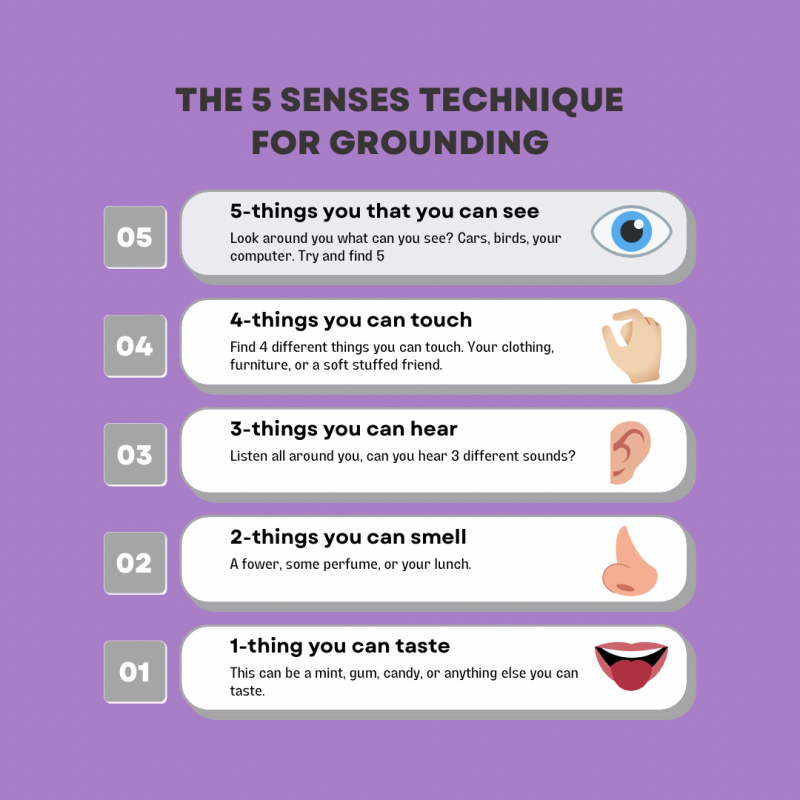
Here are some additional tips to consider that can help when trying to engage your 5 senses to calm down:
- Begin grounding yourself in your senses as soon you realize you’re experiencing strong emotions or a difficult mood.
- Don’t make good or bad judgements. For instance, if you’re focusing on a brown wall but don’t like the color brown, simply tell yourself: “The wall is brown,” instead of, “I don’t like brown.”
- Do your best to focus on the present, not the past or future. If your thoughts wander, softly bring them back to your senses.
- Notice your mood before and after using a technique to see if it’s working for you. You might want to use a scale of 0 to 10 to rate your symptoms. Noticing relief may calm you down even more.
- Be flexible. If you notice one method is more successful than another, stick with that without judgement.
- Don’t give up. It might take a few attempts before grounding methods are successful.
Sources:
Grounding Exercises: Using Your 5 Senses for Anxiety Relief
https://psychcentral.com/anxiety/using-the-five-senses-for-anxiety-relief
Identifying Your Feelings
As children, we are often only taught base feelings i.e. happy, sad, angry, etc. I personally feel that these are surface level feelings, and when we start to dive deeper into that surface level feeling we often discover that there is something deeper going on. A therapist I was seeing would often pull out this feelings wheel to allow me to identify what I was feeling in that moment or that week, and then branch out further to truly help me identify what I was feeling. Take anger for instance-that is a very valid emotion, but it is often the surface level emotion that we are feeling that covers up a deeper emotion. We are often told that we must just be angry about our experiences as adoptees by society and a lot of times we are also shamed for being angry.
When we look deeper into anger we see that we can just feel let down, or betrayed by people we trusted. Having proper language for identifying how I feel has been extremely healing. It’s giving the little adoptee in you a chance to express their feelings now in ways that they may have never had the language for.
I've linked below a few websites that go into greater detail on how these wheels are useful, especially for those of us who are neurodivergent.
The Feelings Wheel: Learn How to Identify Your Emotions

Self-Soothing Kits
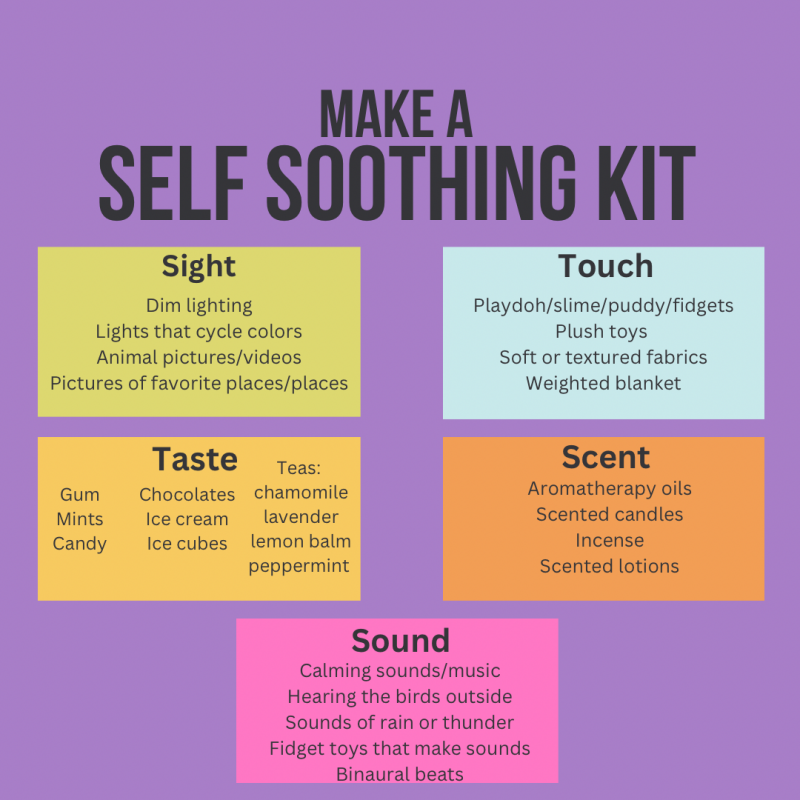
What is a self-soothing kit?
A self soothing kit is a kit full of carefully curated items to help you ease, and reduce the symptoms of anxiety, panic, or just a depressed mood. Please note this is not a replacement for your anxiety medication's given to you by your licensed physician. This is an additional tool to utilize when you start to feel your symptoms arise to possibly mitigate them before anxiety medication is needed, or isn't readily available to you.
A self soothing kit can be used in combination with the (5) senses grounding exercise, or alone.
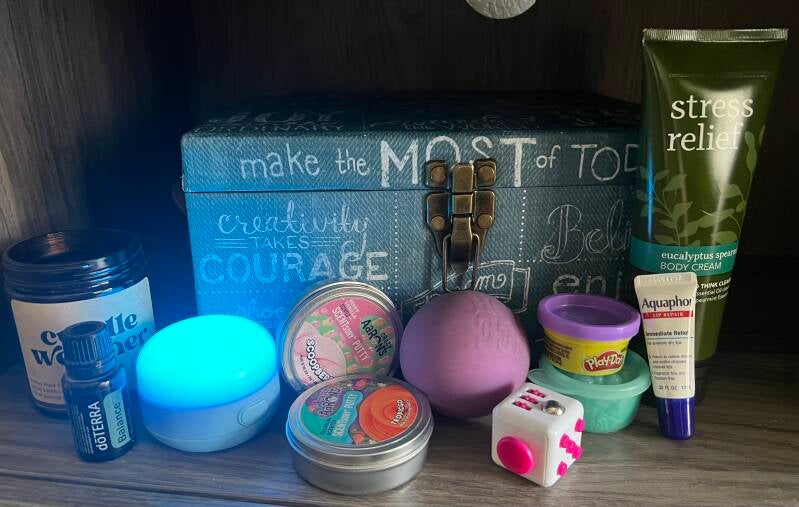
Examples of my at home and travel kits

What does a self soothing kit do?
A self soothing kit is designed to aid users in practicing safe self soothing technics into your daily life.
How do I build a self soothing kit?
- Start with finding your favorite box, bag, or basket to store your self soothing items in.
- Find multiple items for each of your 5 senses that you can add to you box.
- You can decorate your box with quotes, pictures, and other things that are soothing and helpful to you for calming.
- Place your box in an area that it is quickly accessible in a state of panic.
- If any if these items are in travel size I highly recommend making an on the go self soothing kit to bring with you to any place that you know could cause anxiety to rise.
Coloring Books for Adult Adoptees

7 BENEFITS OF COLORING FOR ADULTS
- Your brain experiences relief by entering a meditative state
- Stress and anxiety levels have the potential to be lowered
- Negative thoughts are expelled as you take in positivity
- Focusing on the present helps you achieve mindfulness
- Unplugging from technology promotes creation over consumption
- Coloring can be done by anyone, not just artists or creative types
- It’s a hobby that can be taken with you wherever you go


